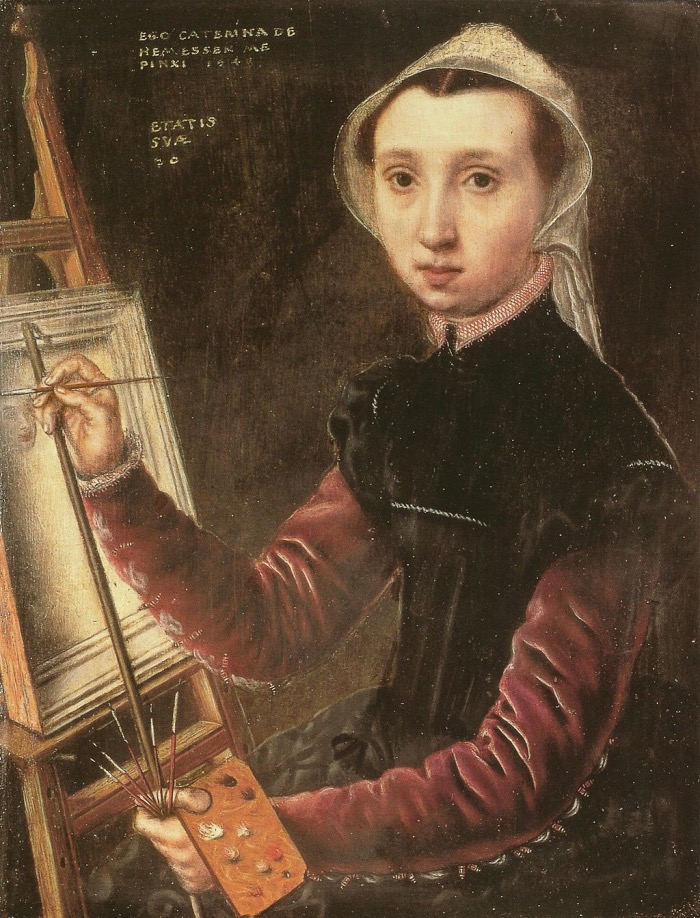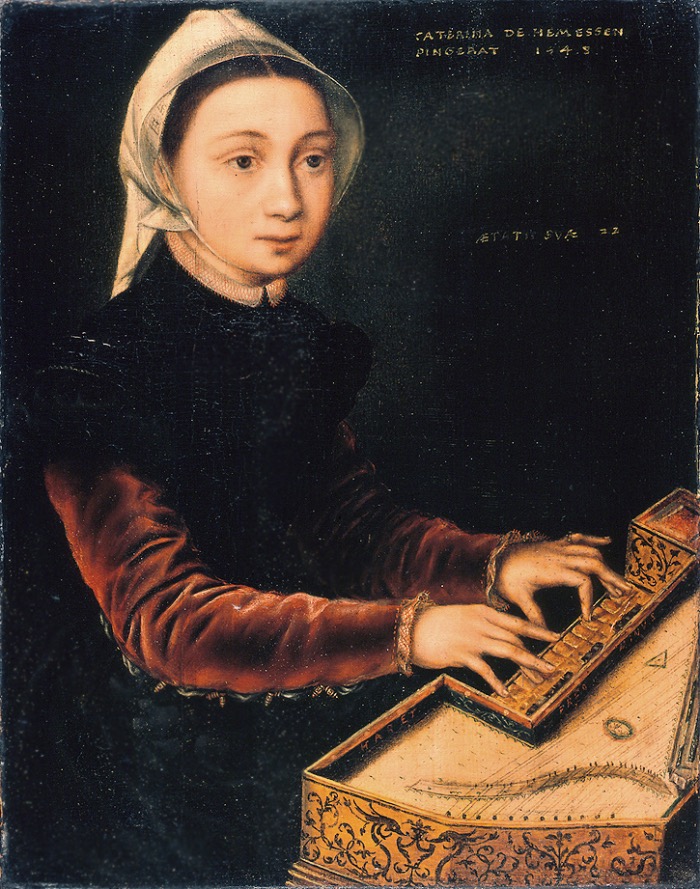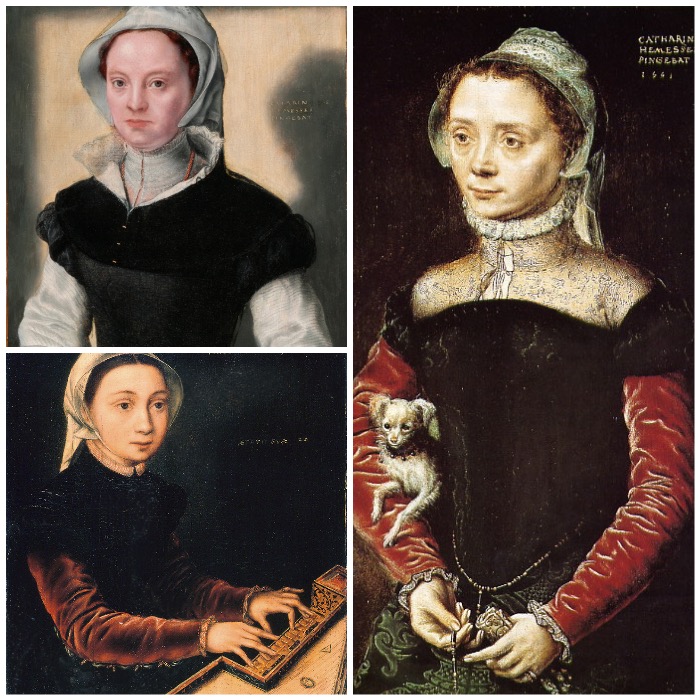Life and works of Catharina van Hemessen, a Flemish female painter

Catharina van Hemessen, self-portrait
LIFE AND WORKS OF CATHARINA VAN HEMESSEN, A FLEMISH FEMALE PAINTER
Catharina van Hemessen is the first Flemish female painter whose life and works are known.
Her story and works, together with those of many other female artists, make us rewrite a piece of art history where women played an important role, not only as muses or models.
The story of Catharina is that of a high talented woman, and it can’t be hidden from the world.
Although few of her works have survived to the present day, Catharina has an important place in art history of the XVI century and she proves that also women, with tenacity and talent, could emerge from a field such as art in the 16th century, controlled by men.
Catharina van Hemessen

Catharina van Hemessen, Girl at the Virginal
The name Catharina van Hemessen appears in a book of 1567, dedicated to the Netherlands, where she was described as a famous female painter.
The fact that a name of a woman appears in a book of the 16th century as an important painter is extraordinary because at that time painting was a job for men only.
Catharina belonged to the same generation of Pieter Bruegel the Elder and lived and worked in Antwerp, one of the main art centres in Europe in the 16th century.
CATHARINA VAN HEMESSEN AND THE FIRST SELF-PORTRAIT OF A WOMAN IN HISTORY
Catharina was the daughter of Jan van Hemessen, the biggest proponent of genre painting in Flanders. Author of paintings depicting scene of ordinary life set in markets, houses and squares.
Catharina van Hemessen did her apprenticeship at her father’s workshop, but soon her talent made her receive commissions independently.
In the 16th century it was common for an artist’s workshop to be managed like a family business, but artist’s children, especially daughters, rarely worked using their own name.
Catharina could sign her own paintings because her father, who loved her very much, was able to recognize her daughter’s talent.
CATHARINA VAN HEMESSEN’S WORKS
Catharina’s most important work is her self-portrait, the first self-portrait of a female painter in art history, painted when she was 20 years ago.
Catharina put her signature in the upper-left side of the painting: EGO CATERINA DE / HEMESSEN ME / PINXI 1548 // SVAE / 20 (I, Catharina van Hemessen, have painted myself in 1548 at the age of 20).
Among her early works is a painting entitled “Girl at the Virginal” (1548), portraying her sister Christina while playing the virginal (or spinet), a keyboard instrument popular during the 16th century.
But Catharina van Hemessen excelled in painting small scale portraits, that was what her clients most desired. The work “Portrait of Woman with a dog” (1551), hanging in the National Gallery of London, is certainly one of the most beautiful and rich in details.
CATHARINA VAN HEMESSEN AT THE COURT OF SPAIN
In 1554, Catharina married the musician Chrétien de Morien, and two years later the couple moved to Spain, at the invitation of Mary of Hungary, who loved her paintings.
When in 1558 Mary of Austria died, Catharina and her husband got a rich pension, as a sign of gratitude for services rendered over several years.
Catharina and her husband returned to Antwerp, where they probably stayed until they died.
There are no extant works by Catharina after she returned to the Low Countries.

Above: Portrait of a Lady, c. 1551.
Below: Girl at the Virginal, 1548.
On the right: Portrait of Woman with a dog (1551).
FIND OUT MORE ABOUT FEMALE ARTISTS
- Great women artists – Phaidon
- Women in Art: 50 Fearless Creatives Who Inspired the World – Ten Speed Pr
Follow me on:
About me
In this blog, I don't explain the history of art — I tell the stories that art itself tells.


